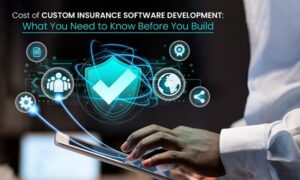Software development cost estimation is usually complex, particularly for SaaS platforms, based on project scope, technology stack, team composition and market conditions. This guide highlights the key elements and considerations to estimate software development costs accurately.
Key Takeaways: Software Development Cost Estimating
- Understand Project Scope: Complexity and scope of the project influence the SaaS app development costs. Detailed planning and scope definition are essential for cost estimation.
- Assess Technology Choices: Selection of technology stack and tools directly impact development cost. Look for technologies that offer functionality, scalability and budget.
- Team Composition & Location: The cost varies based on if the team is in house, outsourced or a hybrid and their location. Labor costs vary significantly region by region.
- Design & User Experience Importance: Good design and UX are crucial for user engagement but escalate development costs. Make appropriate allocation of budget.
- Security & Compliance Costs: Following security standards and regulations is necessary but costly in development. Plan for these costs upfront.
- Maintenance & Updates: Include the long-term maintenance, updates and support costs in the development budget.
- Variability in Price Range: SaaS development costs begin at a couple of thousand dollars for basic applications and can reach hundreds of thousands for more complicated platforms. The SaaS development price range is critical for budgeting.
- Expert Consultation: Consulting with experienced developers or agencies can give a more accurate idea of development cost.
- Post-Launch Costs: Do not ignore post-launch costs, as application maintenance and updates are essential to its success and longevity.
- Strategic Planning: Effective cost estimation entails planning and consideration of all possible costs at the outset.
Addressing these factors allows businesses to develop a more accurate and complete budget for their SaaS development projects, enabling them to be prepared for the investment and make sound development decisions.
Key Factors affecting Software Development Costs
Project Scope & Complexity
- Software development costs are driven mainly by the scope and the project complexity. Clear definition of project requirements, features and functionalities helps estimate effort and resources required. Projects can be simple applications with basic functionalities or fully featured platforms with advanced features and integrations.
Technology Stack & Tools
- The choice of technology stack, programming languages and development tools also impact the cost. Newer or more specialized technologies may have higher costs associated with limited developer talent or longer learning curves.
Development Team & Location
- The development team composition and location are important parameters for cost estimation. Costs may be in house, outsourced or a mix of both. Labor costs also vary significantly country by country and impact the budget.
Design & User Experience
- Design and user experience (UX) are two fundamentals for software creation. Quality design and UX can drive user engagement and satisfaction but increases development cost. This includes the cost of UI/UX designers, prototyping tools and user testing.
Security & Compliance
- Compliance with relevant security standards and regulations can add cost to development. This is particularly important for SaaS platforms that will process sensitive data which also need extra protections like encryption, secure data storage and regular security audits.
Maintenance & Updates
- Software development does not end with launch. The software requires ongoing maintenance, updates and support. These post-launch costs should be included in the budget.
The SaaS Development Price Range estimation
The SaaS development price range for creating a SaaS application can hinge on all the above factors. Generally, simple projects begin from a couple of thousand dollars and more complex solutions can cost hundreds of millions or thousands. It helps to break the project into smaller parts and estimate the price of each component individually for an accurate total price.
SaaS Industry Stats
The Software as a Service (SaaS) business is developing quickly recently because of the proliferation of cloud based solutions in various business domains. The following are key statistics to show the present condition and forecast for the SaaS market:
- Market Size: The global SaaS industry will reach USD 150 billion in revenue by 2022 with a compound annual growth rate (CAGR) of 18-21%.
- Adoption Rates: Over 80% of companies are presently utilizing at least one SaaS program and many utilize SaaS solutions for vital operations.
- Retention of Customers: The average customer retention rate for SaaS companies is around 90%, demonstrating high reliance and satisfaction of users.
- Growth Sectors: The most rapidly growing SaaS solutions are in customer relationship management (CRM), enterprise resource planning (ERP), and cybersecurity.
- Future Trends: Artificial intelligence, machine learning and integration capabilities will dominate the future developments in SaaS and promise more personalized and efficient services.
These stats demonstrate a vibrant and developing SaaS industry and also highlight the need to remain informed and competitive in this area.
SaaS Cost Estimates/Costs
The cost of creating a SaaS application can substantially depend on the application complexity, necessary features and the development team. The following are general estimates of potential costs:
- Initial Development: This could cost between USD 10,000 and USD 500,000. Simple apps might be lower priced while more complex apps with more features may require a larger investment.
- Maintenance Costs: Expect to spend 15-20% of the initial development cost annually on maintenance and updates.
- Marketing & Sales: Marketing and revenue budgeting is essential for a SaaS product that generally takes 20% to 50% of the budget.
- Infrastructure: Ongoing costs vary from just a few hundred dollars a month to many thousand dollars yearly for server hosting, protection and software licenses based on requirements and usage.
Companies must plan and budget their SaaS projects carefully to ensure financial viability. The correct estimation and resource allocation can make or break a SaaS application successful and profitable.
Tools to Estimate SaaS Costs
The right tools can provide more accurate cost estimates and manage finances when planning and budgeting for a SaaS application. Some tools to help you accomplish this :
- Financial Modelling Software:
- PlanGuru: Provides budgeting, forecasting and financial analytics for small to medium sized companies.
- Float: Cash flow forecasting tool for accounting software such as QuickBooks and Xero.
- Project Management & Estimation Tools:
- Jira: Widely used for agile project management with detailed sprint planning and estimation.
- Trello: Useful for organizing tasks and tracking progress, and estimation of time and resources.
- Platforms for Cost Estimation:
- Price & Cost: Aims at project-based cost estimation, tracking your budget and resources.
- Google Cloud Platform Pricing Calculator or AWS Pricing Calculator: Provides estimates of cloud services costs, which are needed by SaaS apps that use these platforms.
Using these together can give you an idea of your SaaS project financials from different perspectives and help manage the budget more effectively.
Future Trends Forecast in SaaS
The SaaS business is always changing with new technologies & market demands. Following are some expected trends in SaaS:
More Integration Capabilities
- SaaS platforms will likely concentrate on interoperability with other tools and systems.
AI & Machine Learning
- These technologies will find their way into SaaS solutions as predictive analytics, enhanced customer service, and personalized user experiences are expected.
Vertical SaaS Expansion
- Industry-specific SaaS solutions will grow in response to the particular needs of particular sectors like healthcare, education, and finance.
Security & Compliance in Focus
- As cyber threats evolve, SaaS providers will place greater emphasis on sophisticated security and compliance with global regulations.
Micro-SaaS Rise
- Smaller, niche SaaS applications that address specific customer needs or that integrate with larger platforms will flourish as custom applications and value-added services to existing ecosystems.
Emphasis on Customer Success
- SaaS companies will invest more in customer success initiatives to increase retention rates, understand user needs much better, and ensure customers achieve their desired results.
Keeping up with such trends and also integrating them into your SaaS growth & development strategies can position you for being successful in the digital landscape.
Steps to Estimate Software Development Costs
- Define the Scope: Clearly state the project requirements, features, and outcomes.
- Pick the Right Team: Identify the costs, expertise, and resource constraints to go in-house, outsource, or adopt a hybrid model.
- Select the Technology Stack: Find the technologies that best suit the project need and budget.
- Plan for Design/UX: Dedicate budget for design and user testing to make the software intuitive and attractive.
- Take Security Measures: Add the costs of necessary security and compliance measures.
- Post-Launch Expenses to Account For: Include estimated maintenance, update, and customer support costs.
Conclusion
The precise estimation of software development cost, particularly for SaaS platforms, requires an understanding of the task scope, complexity, and market standards. Taking into account the factors above and planning accordingly, businesses can develop realistic budgets that reflect the true cost of delivering their software solutions. For more on the SaaS development price range itself, resources such as Brights’ detailed analysis can provide useful benchmarks.
Call to Action
If you’re planning a SaaS project, first evaluate your project’s particular requirements and consult experts to get precise cost estimates. Consider contacting professional agencies specializing in SaaS development for advice and customized estimates based on your needs.



































